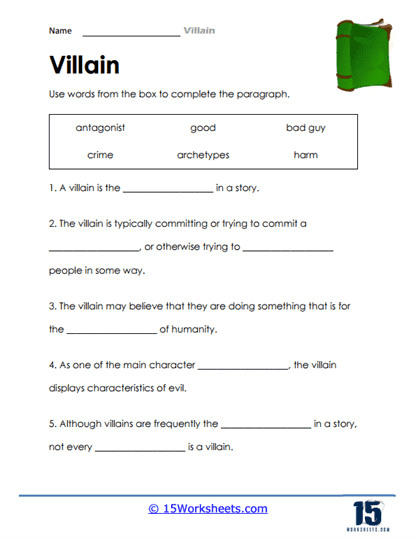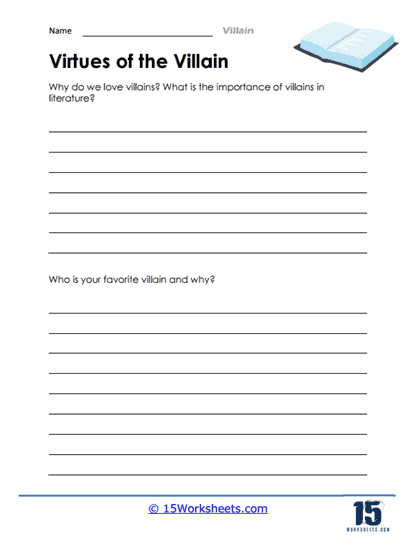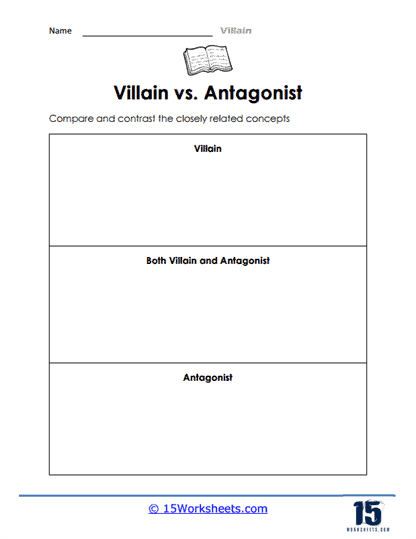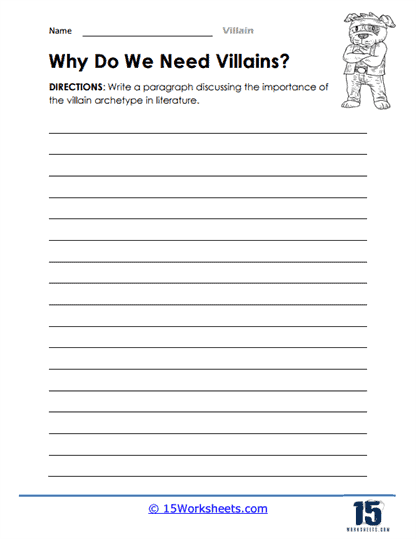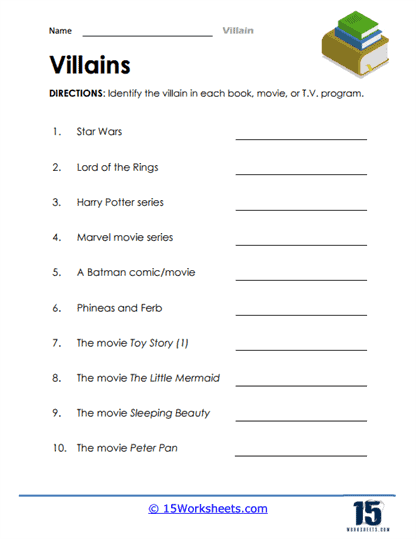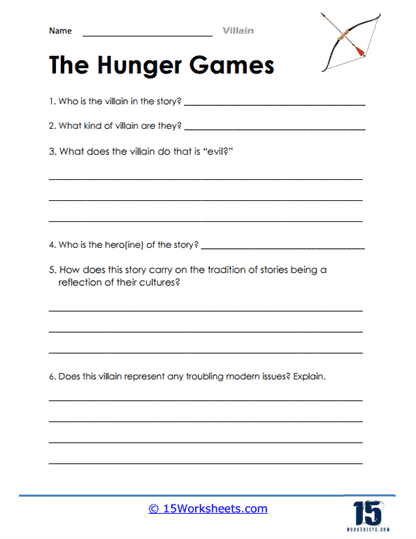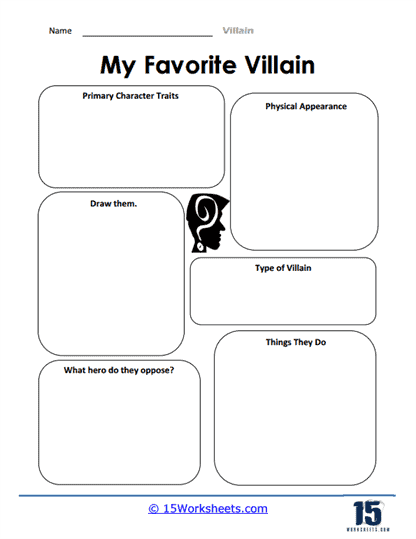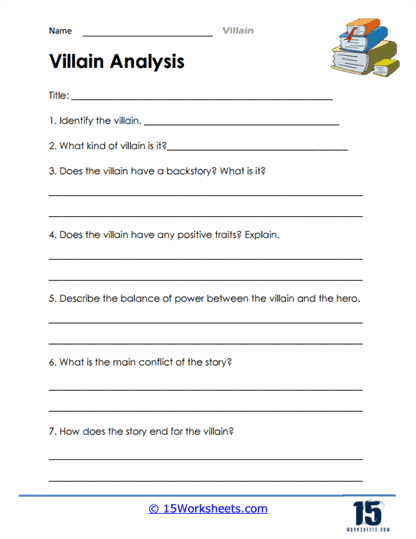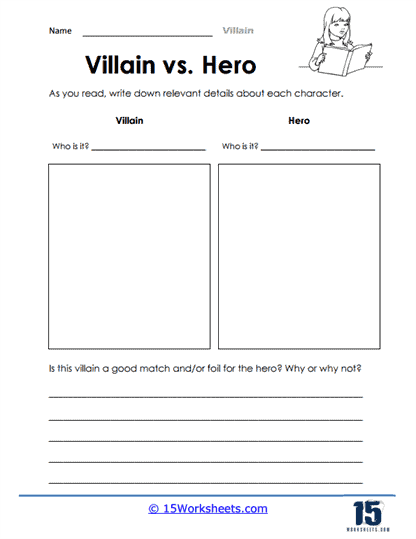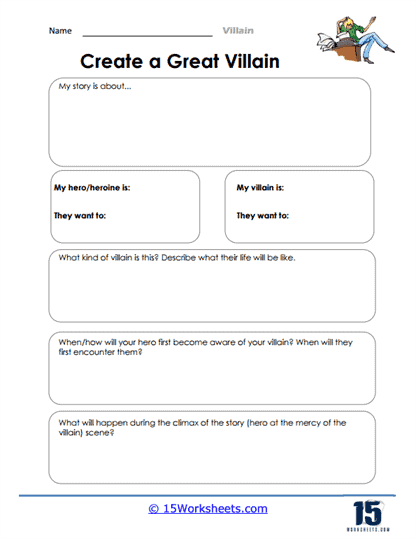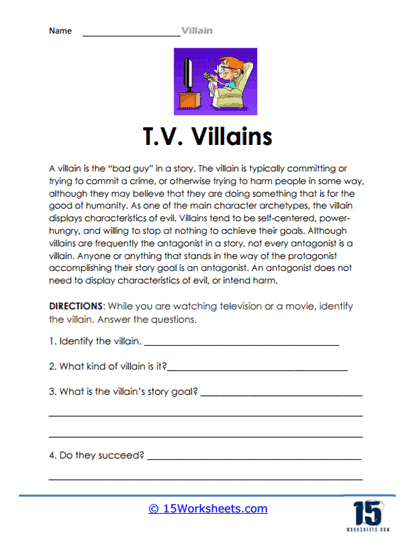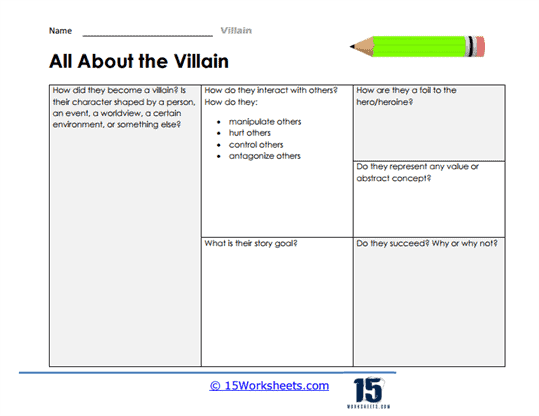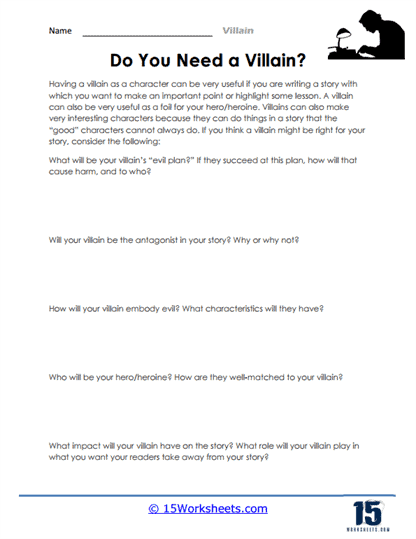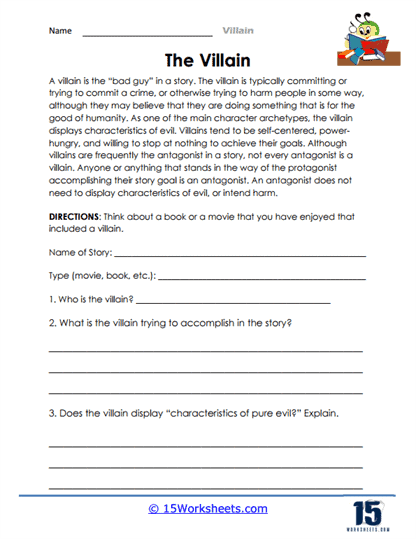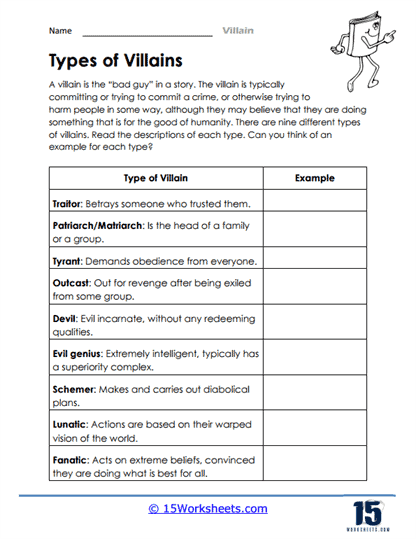Villain Worksheets
All About These 15 Worksheets
These worksheets are designed to help students explore the concept of villainy and its various aspects. These worksheets typically include a variety of activities that encourage critical thinking and reflection on what it means to be a villain. Some of the activities that are included in these worksheets are the following:
- Defining villainy – Students are asked to define what they think villainy is, and to consider the different qualities and actions that make someone a villain.
- Analyzing villains in literature and pop culture – Students are asked to recall popular villains, and reflect on what makes these individuals villainous.
- Discussing the role of villains in storytelling – Students are encouraged to think about the purpose of villains in stories, and how they contribute to the plot and themes.
- Creating their own villain – Students are tasked to create their own villain character, and to think about what qualities and actions this character would need to possess to be considered a villain.
Overall, these worksheets can help students to develop a deeper understanding of the concept of villainy and to appreciate the complexity of villainous characters in literature and storytelling.
What is a Villain?
In every story, a villain or antagonist is a bad guy, the evil, unethical, cruel character who brainstorms diabolical plans to hurt everyone else. However, not every villain falls on a black-and-white spectrum on the good vs. evil debate.
So, what is a villain really? Who are they? Why are they important? What do they represent?
Who Are Villains in Stories?
Villains are the transgressors authors use to create interest and conflict in plots that require them. They are most commonly depicted as evil, insensitive, and self-absorbed. However, when you peel the negative layers of their character away, you are exposed to the core of a villain who is essentially someone who is almost as strong as the protagonist.
Not all villains are dark characters; most villains are gray characters that commit evil crimes to fulfill a purpose they believe is right. In many stories, the villain is trying to avenge a tragedy or acting on feelings of low self-worth even though they are almost as talented as the good guy.
When it comes to deciding which villain is inherently evil and who belongs in the grey zone, it is entirely up to audiences. Stories like The Song of Ice and Fire, Six of Crows, and others, which expose us to the motivations of said villains often land them in the grey area of morality.
Why Are Villains Important?
While the protagonist is great on their own, they need a villain to become better. Here’s some food for thought, would the hero really be as special if the villain didn’t exist? Villains are integral parts of most stories, meaning the plot can’t move forward without its very own bad guy.
Villains represent everything that’s wrong with society. They’re evil, immoral, and usually not above the law. But in recent times, villains have evolved with backstories of their own.
Villains represent qualities that are actually impressive on their own but not entirely socially acceptable. While qualities like being madly driven aren’t actually that bad, most audiences look down upon them. However, authors who manage to give their villains an impressive backstory end up creating characters audiences love. Here are a few qualities that make a good villain:
- They believe he’s the good guy
- They have numerous charming qualities
- They’re deserving opponents
- You (and your audience) like when he enters the plot
- They’re smart and accomplished enough that people must grant him begrudging respect
- They aren’t a fool or a failure
- They have several of the same attributes as the hero, but he’s misdirected
- They should sometimes be kind, and not just for display
- They can be ruthless, even to innocent characters
- They’re compelling
- They’ll quit at nothing to obtain what they want
- They’re scornful
- They’re misleading
- They’re envious, particularly of the hero
- They’re vindictive
Villains are driven, and they have the potential to become the protagonist, which is why they are shown as evil characters so more socially acceptable characters can become the main character in every story.

